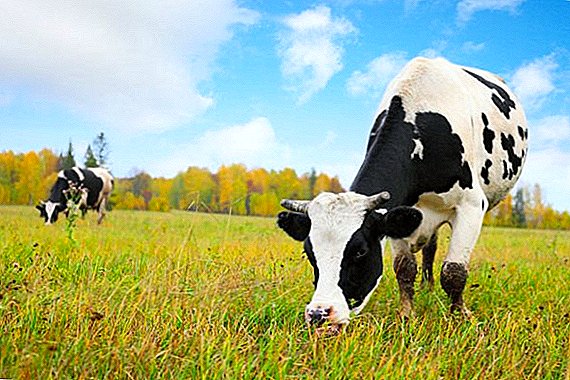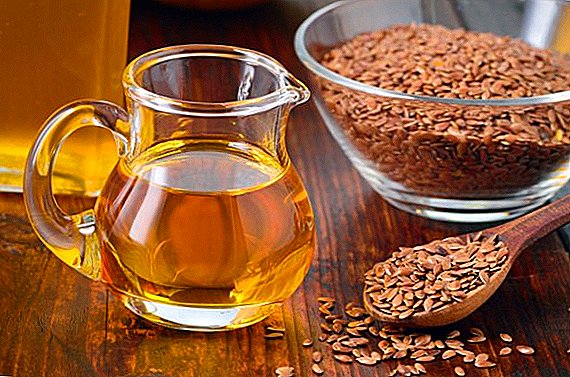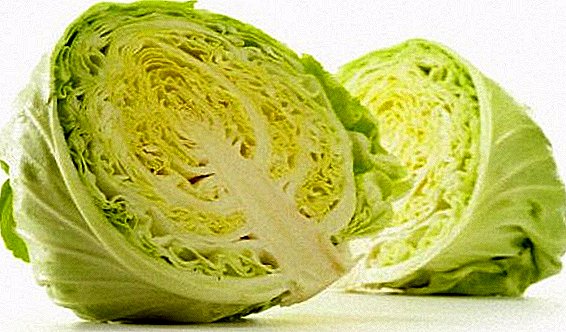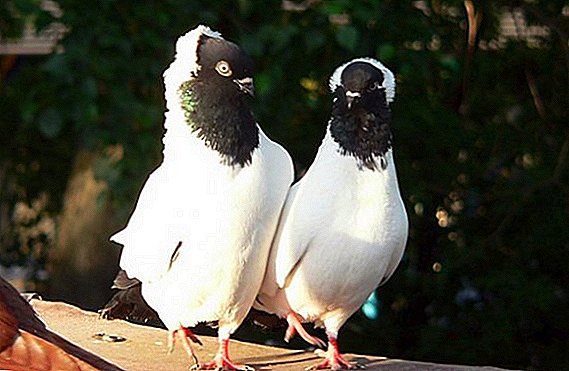 Pigeons are birds that have been tamed by man for thousands of years. Initially, people kept them for food, then the birds found other spheres of use, and they began to be bred not only for practical purposes, but also for aesthetic pleasure. Today we will talk about the old German form of the cross monks, as well as the history of their appearance and features of appearance.
Pigeons are birds that have been tamed by man for thousands of years. Initially, people kept them for food, then the birds found other spheres of use, and they began to be bred not only for practical purposes, but also for aesthetic pleasure. Today we will talk about the old German form of the cross monks, as well as the history of their appearance and features of appearance.
Origin
In the 17th century, a breed was bred in Germany, with a cross on its wings visualized during flight. These pigeons are called monks. Subsequently, the word "cross" was added.
Important! Initially, the breed was derived as gonnoy, which took part in the hunt, flushing away the birds hiding in the crowns of trees. To do this, the monks had to constantly train.The work of breeders called a grand, in the homeland still hold exhibitions where breeders show their pets. Today it is quite difficult to find pure-blooded cross monks, this happened as a result of a large number of crosses with other breeds for the sake of improving certain indicators.

Breed characteristic
Monks are an interesting breed, which is divided into varieties: Moscow and German. Apart from the color of feathers, there is no difference between them.
Find out what diseases you can get from pigeons, how to find the floor of a pigeon, how many pigeons are sitting on eggs, why pigeons nod when they walk, and how long pigeons live on the outside and at home.
At the first, the main color is white, only the top of the head and tail are painted in a different color, in German the body is also white, but unlike the previous ones, the ends of the wings and tail are painted in a different color. However, experts consider them as separate subspecies. Consider the distinctive features of this breed of pigeons. 
Appearance
The standard appearance of a purebred specimen has the following characteristics:
- Plumage - light. The color of the tail and cap can be yellow, coffee or even black. The crest of pedigree representatives should be white.
- Body - large, its length is about 35 cm, while it is slightly elongated and tilted forward.
- Head - round shape, forehead - sloping. Between the ears there is a tuft of densely planted feathers.
- Neck - middle length. Near the head is thinner than around the shoulders.
- Chest - quite wide, about 24 cm in girth.
- The back is elongated, the transition to the tail is almost absent.
- Eyes - medium size. The pupil is black, the eyelids are flesh-colored.
- Beak - even, small size, its length - no more than 16 mm.
- Wings pressed to the body and quite long, but the ends do not fall below the tail.
- Tail consists of 12 tail feathers, in shape - flat.
- Legs - without feathers, red color, with light claws.
 Pigeons, which have visible deviations from the appearance of the standard species, are not purebred monks.
Pigeons, which have visible deviations from the appearance of the standard species, are not purebred monks.Did you know? In ancient Babylon, as well as in Assyria, the dove was a bird, symbolizing the kingdom.
Behavior
Cross monks do not like to fly high and long; they prefer to sit on roofs, while being rather close to each other. Despite the fact that these birds are proud and dignified, they are endowed with affectionate and friendly character.
Breeders have noticed that pigeons love to invite newcomers to their flock. To do this, they fly up to them and jump around - as a result of such actions, the novice joins them and becomes a member of the pack.
How to distinguish purebred
Despite the fact that ordinary people do not pay attention to small details in the appearance of certain birds, avid breeders know exactly how to distinguish a thoroughbred representative seeing all the shortcomings at once.  Consider what disadvantages monks are considered minor:
Consider what disadvantages monks are considered minor:
- dark marigolds;
- on the tail feathers of light shade;
- wings of small length;
- beak shorter than 15 mm;
- breast is sunken.
Familiarize yourself with the various types of high-flying, forest and wild pigeons, as well as the strangest and most colorful breeds of pigeons.
The following characteristics are attributed to the complete non-conformity to purebred breed:
- lack of a crest or its rare plumage;
- tail light shade;
- small body;
- presence of feathers on the feet;
- plumage color without clear boundaries;
- the presence of white stripes on the head;
- large head;
- thick beak.

Birds, which have at least some of the characteristics set forth above, cannot participate in exhibitions as representatives of the breed of the cross monks.
Content Features
The birds of this breed are unpretentious in their care and easily adapt to captivity. It is important that the pigeons have enough light, air, and also be clean and safe.
Important! The monks are clean birds that are strongly attached to the owner and are very loyal. In addition, they have increased parental responsibility, they even easily take care of other nestlings of other breeds.At the same time, each individual must have an individual place to rest or incubate the offspring.

Indoor conditions
There should not be any grids inside the pigeon house, birds should have complete freedom of movement. Since the pigeons are clean, they need systematic cleaning of the pigeon house and its disinfection.
Learn how to build a dovecote with your own hands.
During the harvesting, it is necessary to thoroughly clean the resting places, as well as the troughs and feeders from food debris. Disinfection is usually carried out 1 time per month. At this time, the birds are removed from the pigeon house and carefully treat all surfaces with a disinfectant solution, after which the room needs good ventilation.
What to feed
Cross monks are omnivores. It is important that their food is balanced, only in this case the pigeons will not get sick and will remain hardy. 
The diet of birds of this breed consists of the following feed:
- Oats and barley. Contains a lot of fiber, which has a positive effect on the work of the stomach.
- Corn. Easily absorbed by the body, while superior to other feed on the energy value.
- Lentils Source of plant proteins.
- Hemp and flaxseed. Replenish the level of amino acids and fats in the body.
- Millet. Contains a large amount of vitamins necessary for birds.
Read more about how to feed pigeons and pigeons, as well as what vitamins are better to give pigeons.
It is useful to add fish oil at the rate of 10 ml per 1 kg of feed. After goiter milk, babies are given wheat soaked in water for the first time.
Video: how to feed and water the pigeons Although it is difficult to meet thoroughbred monks today, however, if you set a goal to breed these beauties, you can find a couple who, if properly cared for, will be able to produce offspring, but it will later become a whole bunch.
Did you know? Each dove is tied to its territory, even if the bird is taken to another place, it will return home. Scientists believe that these birds react to the magnetic field of the earth.












